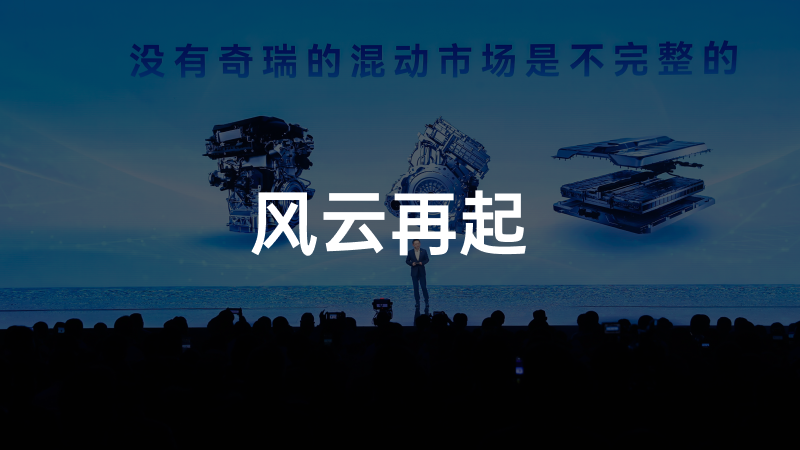From January to October this year, Chery Group achieved sales of 1.454 million units, a year-on-year increase of 41.6%. Of these, the Chery brand sold nearly 1.05 million units, breaking the million-unit mark for the first time.
Meanwhile, the new energy vehicle market is also growing rapidly. According to data released by the China Association of Automobile Manufacturers, from January to October this year, domestic new energy vehicle sales were 7.28 million units, a year-on-year increase of 37.8%. Moreover, new energy vehicle sales accounted for 30.4% of total new car sales.
Faced with the transformation of the automobile market, Chery’s Wind Cloud series has returned to the market, and the Wind Cloud A9 and Wind Cloud T11 concept models recently made their global debuts. According to the plan, Chery Wind Cloud will launch 11 new models in the next two years.
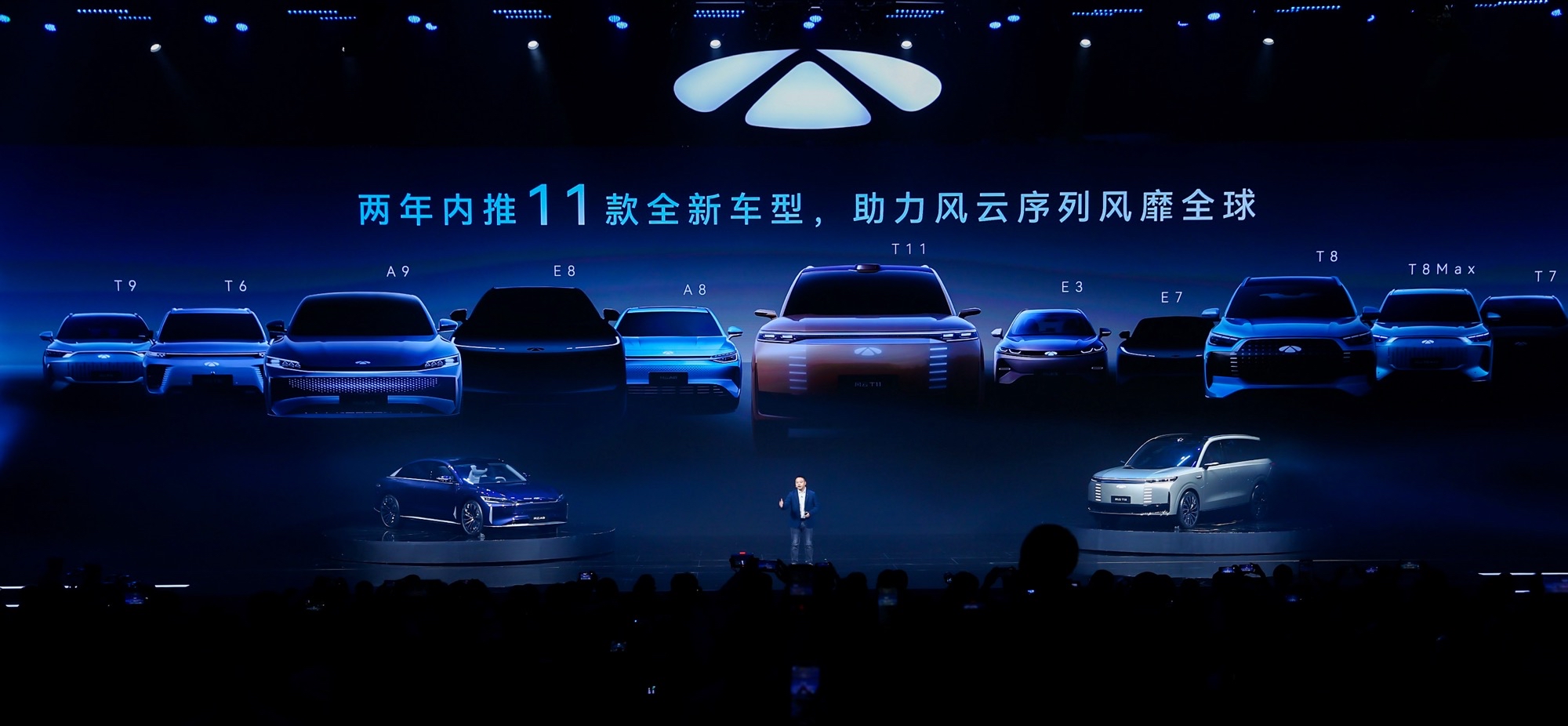
According to Li Xueyong, Deputy General Manager of Chery Automobile Co., Ltd., General Manager of Chery Marketing Co., Ltd., and General Manager of JT Automobile, Chery will “go all in and target the new energy market”.
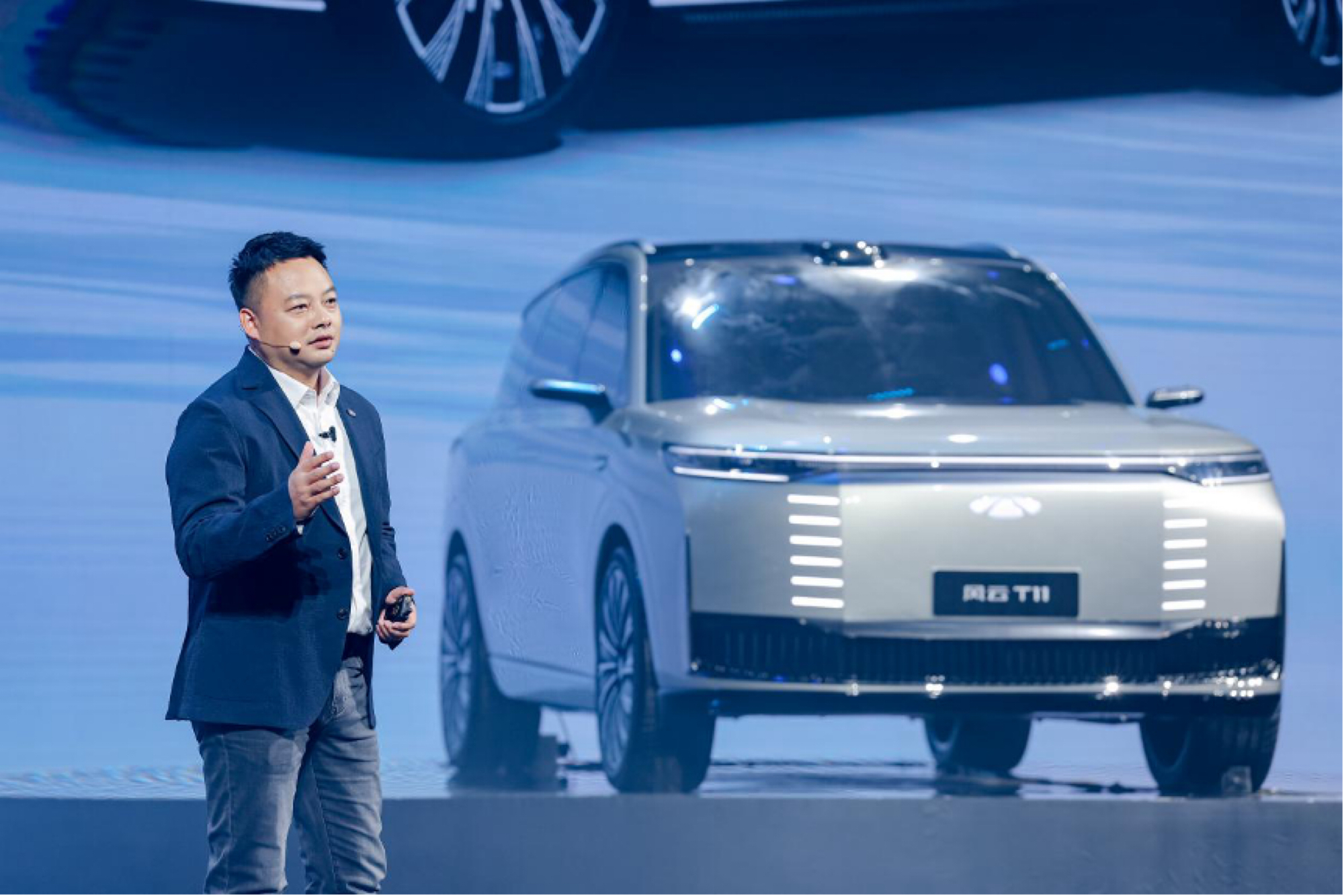
For a new energy vehicle, an excellent power system is crucial. So can Chery, which embodies a “tech-savvy” spirit, provide an outstanding solution? This begins with Chery Group’s global layout.
Addressing Global User Pain Points
Today, Chery car owners are scattered across more than 80 countries and regions worldwide, and meeting various complex usage requirements was the starting point for the development of the Chery Wind Cloud series.
Some countries and regions have very typical vehicle usage requirements:
- Brazil: Some mountain roads are steep, so users need powerful engines.
- Indonesia: With high humidity and lots of rain, water resistance is vital in new energy vehicles.
- The Middle East: High temperatures year-round coupled with cruise control needs present significant challenges for stable operation under different temperatures.
- Germany: Users demand quick acceleration on unlimited speed highways.
- China: Users are anxious about mileage and energy consumption, but current products struggle to balance energy consumption and performance.
Understanding the needs of users from different countries and regions, what users need can be summarized in one sentence: a power system that offers lower energy consumption and higher performance while ensuring safety and reliability. Especially for domestic users, they won’t compromise on energy consumption, performance, and safety.
In response to these demands, Chery’s solution is the Kingfisher Super Energy Hybrid C-DM. This plug-in hybrid power system consists of Chery’s fifth-generation ACTECO 1.5TGDI high-efficiency hybrid dedicated engine, three-speed super electric hybrid DHT, stepless super electric hybrid DHT, and hybrid dedicated battery and battery management system.
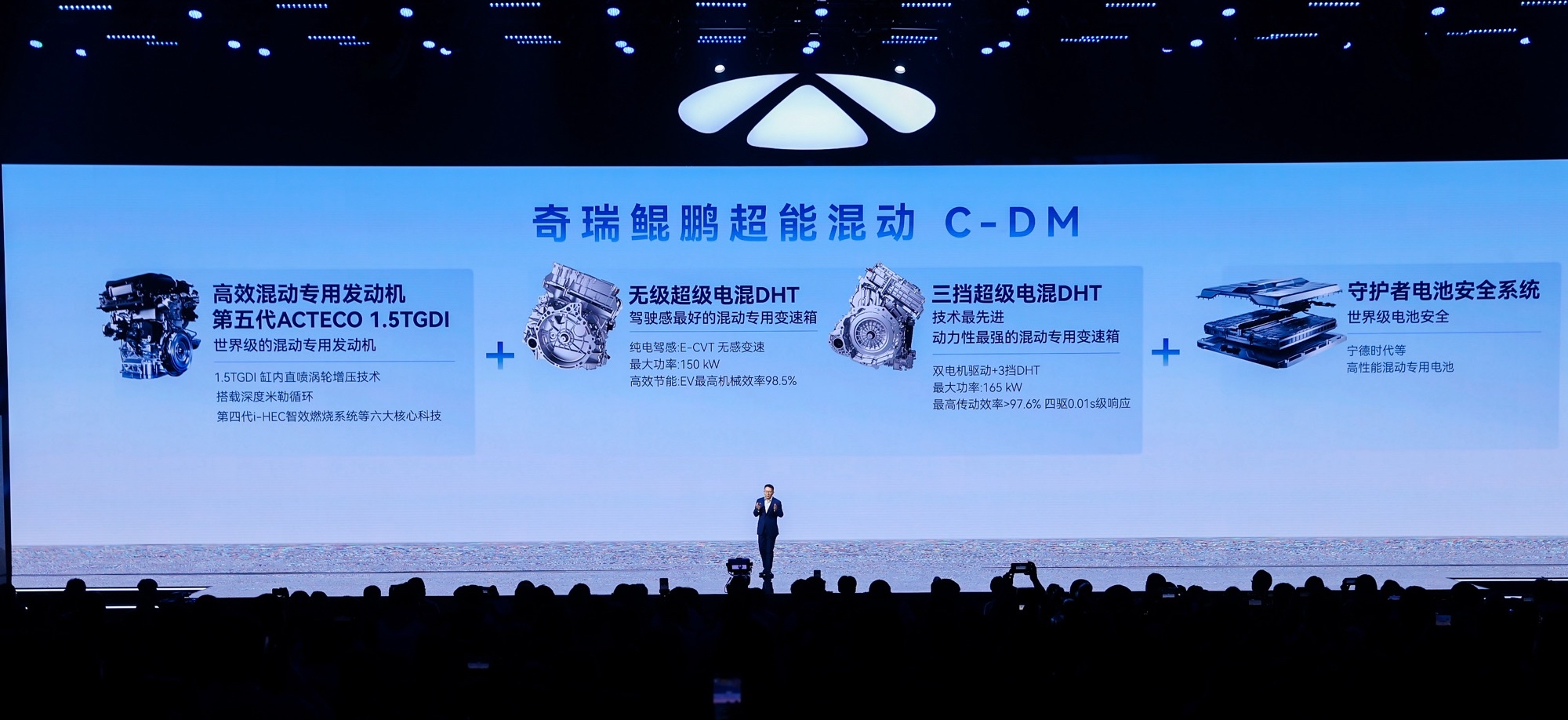 The latest Chery series that made its debut, are equipped with this system. From a structural perspective, the C-DM of the Kunpeng Super Hybrid is a mainstream plug-in hybrid power system. So, how do we meet the diverse needs of global users?
The latest Chery series that made its debut, are equipped with this system. From a structural perspective, the C-DM of the Kunpeng Super Hybrid is a mainstream plug-in hybrid power system. So, how do we meet the diverse needs of global users?
What is the level of efficiency above 44.5%?
For plug-in hybrid models, in order to achieve low energy consumption, the efficiency of the engine must be improved. There are two indicators that must be paid attention to here, one is the maximum thermal efficiency, and the other is the high-efficiency region of the engine.
This is an engine characteristic diagram, which describes the relationship between engine torque and speed. The closer to the central area of the figure represents higher engine efficiency.
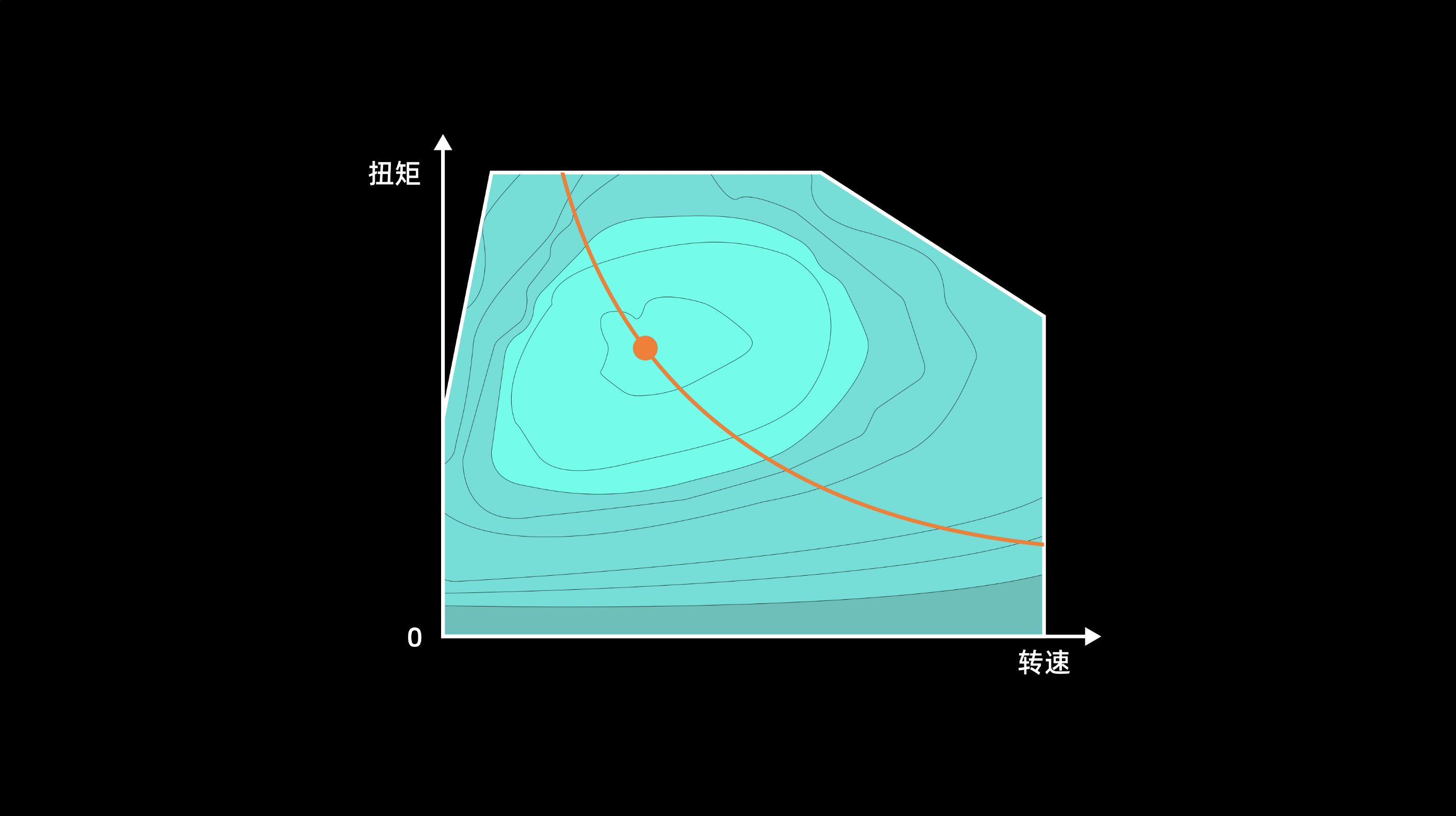
The red dots in the central area of the figure represent the highest point of engine efficiency. The maximum thermal efficiency of the fifth-generation ACTECO 1.5TGDI high-efficiency hybrid specialized engine by Chery exceeds 44.5%.
Compared with the current mainstream dual-motor series-parallel hybrid system, Chery has a higher thermal efficiency.
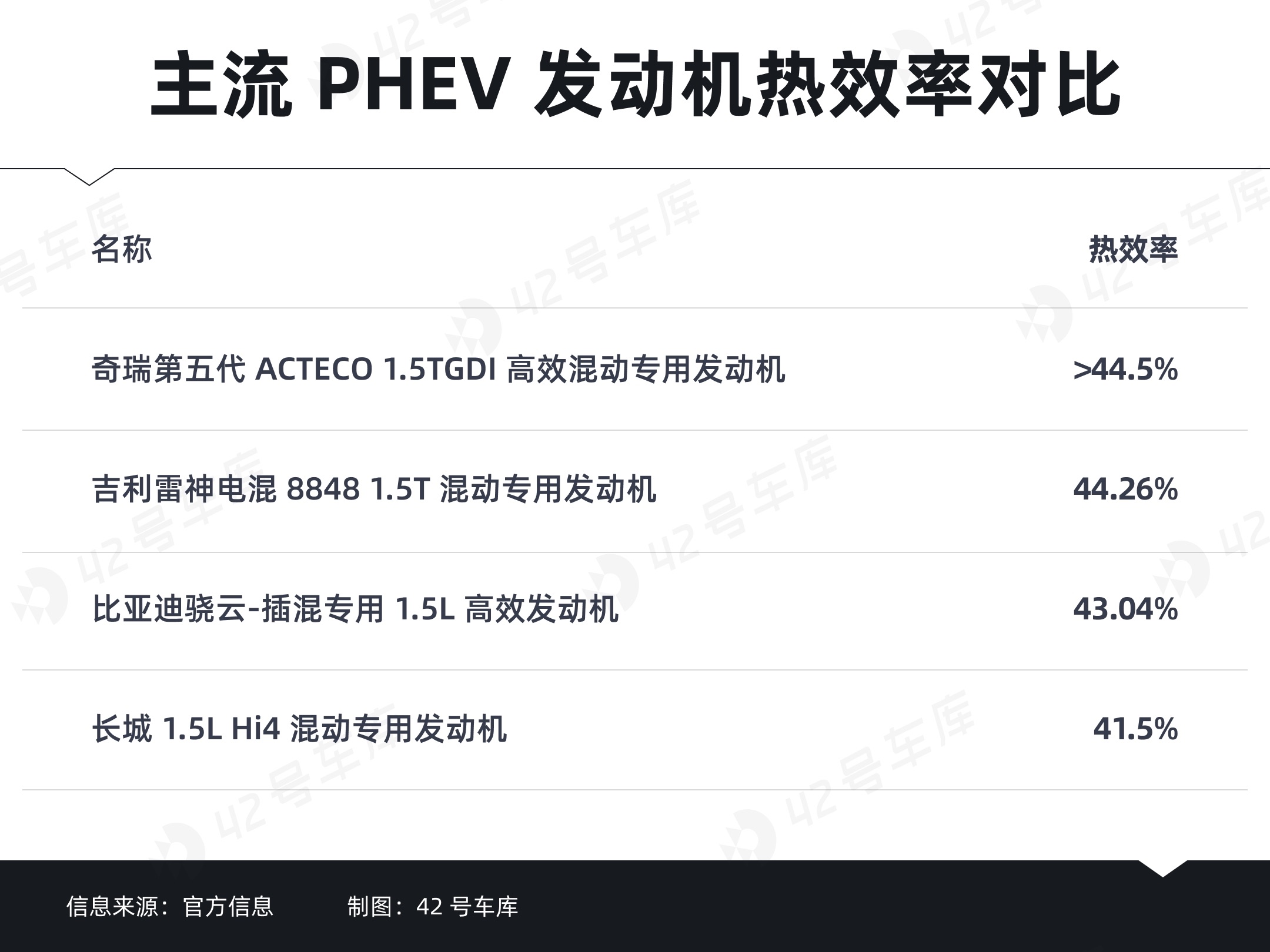
However, having the highest thermal efficiency alone is not enough. This is because the highest thermal efficiency point can only represent a combination of speed, torque, and output power. And vehicles have different power requirements under different operating conditions. That is, if the engine can perform efficiently under different combinations of speed, torque, and output power, that would truly be efficient.
This is precisely the case with the fifth-generation ACTECO 1.5TGDI high-efficiency hybrid specialized engine. The engine’s high-efficiency zone ranges from 1,000 revolutions to 5,500 revolutions.
Under WLTC conditions, Chery’s series vehicles can achieve 4.2 L per 100 kilometers, compared with BYD Qin PLUS DM-i 2023 Champion Edition 4.6 L per 100 kilometers WLTC combined working condition loss of electric fuel consumption, Chery’s series vehicles demonstrate lower fuel consumption performance.
In addition, compared to plug-in hybrid models that can only be filled with gasoline No. 95, which may “save fuel but not save money”, the models in Chery’s series that can be filled with gasoline No. 92 accomplish both fuel and cost savings.
Lower energy consumption level hints that under the full fuel and electricity condition, Chery’s series vehicles can offer longer cruising ability. Its WLTC comprehensive cruising range exceeds 1,400 km, termed by the official as the capability to travel from Beijing to Shanghai without any energy replenishment and only needs twice from Beijing to Lhasa.
Low energy consumption with high performanceFrom the above analysis, it is evident that an efficient hybrid engine is essential for achieving higher efficiency and lower energy consumption. At the same time, the feed oil consumption of excellent products in the industry can also achieve a level of 4 L/100 km.
However, it is unrealistic to just talk about energy consumption and not performance. While pursuing lower energy consumption, some car owners find that they are encountering high-speed loss and poor acceleration after the vehicle is delivered. During daily city commuting, it’s completely fine as a grocery shopping car. However, once on the highway pursuing performance, it falls short.
As we all know, the price for high performance is inevitably high energy consumption, but, at the same time, better balance can be achieved through other technical means. Since the engine can achieve higher efficiency, it can achieve better performance under the same fuel consumption.
This is a capacity that the Kunpeng Super Hybrid C-DM has already achieved.
The fifth-generation ACTECO 1.5TGDI efficient hybrid-specific engine can achieve a maximum power of 115 kW and a torque of 220 N·m.
For different models and user requirements, Chery has two different electric powertrain solutions.
One is the 3DHT gearbox with dual motor drive. The 3DHT gearbox can allow the vehicle to adapt to more working conditions, while the dual motor driving is to empower the car with stronger performance.
When the vehicle is at a low speed, the better power and acceleration performance can be achieved with drive 1. During the high-speed cruising stage, switch to drive 3 to achieve lower energy consumption. If accelerating and overtaking, downgrade to drive 2.
This means that from low to high speeds, as long as the engine is running, it can have more efficient performance. For car owners, it can save more fuel under all kinds of working conditions.
In terms of performance, the maximum power of the motor is 165 kW, and the maximum wheel end output torque is 4,000 N·m. With the power of the engine, the zero to hundred acceleration official data of Kunpeng Super Hybrid C-DM is as fast as 4.26s, and the maximum speed can reach 240 km/h.
To address the issue of lackluster acceleration, this powertrain system can achieve 30 – 70 km/h acceleration time of 2.9s and 90 – 120 km/h acceleration time of 3.6s. These two acceleration metrics represent city and highway overtaking scenarios respectively. According to the data released by Chery, these two performance metrics are 1 second faster than its competitors.
At the same time, the maximum transmission efficiency is higher than 97.6%, and the average efficiency of electric drive is higher than 90%. More reduced energy consumption can be realized during the transmission process.
The other system is a stepless super hybrid DHT, in other words, an E-CVT gearbox match with a powertrain system with a driving motor to achieve higher efficiency.
The advantage of this powertrain system is that it is more smooth and quiet. There is almost no perception of the gear shift in the E-CVT gearbox, and with the predominance of electric drive, the driving experience is closer to that of a pure electric car.
This powertrain system has only one driving motor, with a maximum power of 150 kW and peak wheel torque of 3,750 N·m. Although the power is not as strong as the four-wheel drive version, it is sufficient for daily family use as seen from the parameters.Through the analysis of these two propulsion systems, Chery has achieved high efficiency with an excellent engine, and even lower energy consumption in combination with two different electric drive systems. As consumers, there is no longer a need to compromise performance in pursuit of low energy consumption.
Global Standard for Battery Safety
For a new energy vehicle, the power battery has become one of the “New Three Components”. However, battery safety is an issue the industry wants to solve but finds difficult to resolve.
According to research by Chery, more than 66% of power battery fires are caused by physical damage to battery cells or high-voltage systems, resulting in thermal runaway.
Therefore, a sturdy and reliable battery pack is the target of development.
Dr. Xu Youzhong, Assistant General Manager of Chery Automobile Co., Ltd. and Deputy Director of the Automobile Engineering Research Institute, mentioned in his speech that Chery has done dozens of scenarios and hundreds of optimizations, for control force and deformation, even for a small fixed bolt.
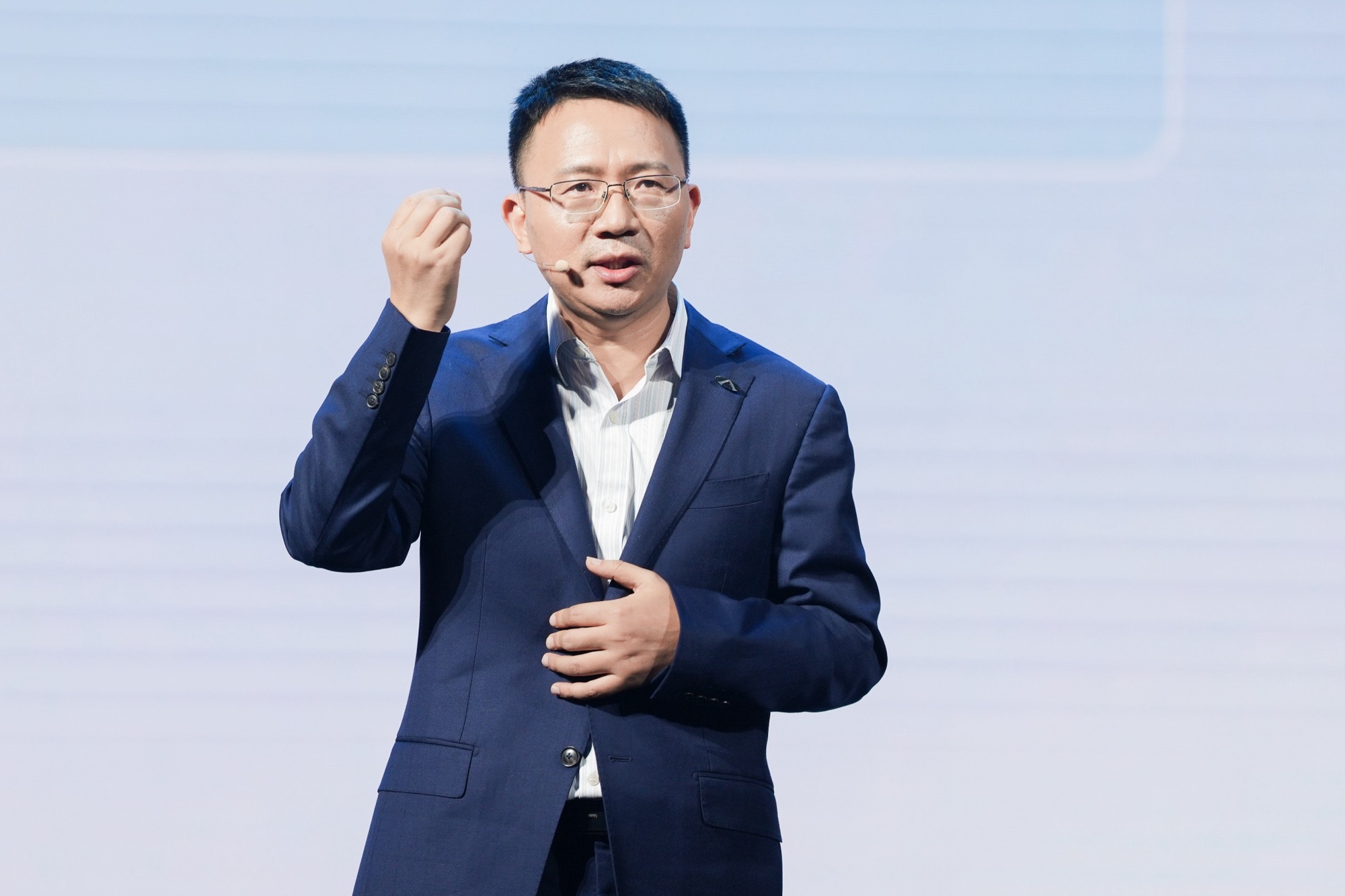
Chery has designed a three-fold safety standard for its Guardian Battery Safety System. The first is battery safety, which includes high safety battery cells and architectural safety of the battery pack; the second is security of battery information management featuring big data protection and efficient thermal management; the third is safety of the vehicle battery consisting of collision protection, water intrusion protection, charging protection, and high voltage protection.

In terms of safety performance, Chery provides the following data:
- The whole vehicle’s water-resistance performance reaches 3 times the national standard, the battery pack’s water-resistance performance reaches 48 times the national standard.
- The battery pack’s impact resistance reaches 50 times the national standard.
- During driving and charging, the high voltage is cut off within 2 ms in case of impact.
It is precisely because of these criteria surpassing national standards that the Guardian Battery System adapts to different global markets and achieves superior safety quality.
Additionally, the Guardian Battery System equipped on Chery’s Fengyun model series vehicle can achieve a pure electric range of more than 200km, satisfying the need for city commuting.
In Conclusion
Low energy consumption without high performance might have characterized plug-in hybrid vehicles of a certain period. But by 2023, technological innovation will bring about a better balance between low energy consumption and high performance, which the launch of the Chery Fengyun series perfectly exemplifies.
Do users not pursue performance? Not exactly. For the wider vehicle-user group, energy consumption is simply placed at a higher priority level. With technological advancement and consumer upgrade, striving for better performance naturally becomes another crucial indicator for vehicle usage.
The Fengyun A9 and Fengyun T11, the first models from the Chery Fengyun series to be unveiled, will also be the first to go on sale. Including these two models, 11 models will be launched successively in the future.Leveraging Mars Architecture, Kunpeng Power, Xiongshi Smart Cabin, Dazzling Intelligent Drive, and Galaxy Ecosystem, the Chery Wind Sequence offers significant strengths in power and intelligence, catering to the rapidly increasing user demands and the industry competition in intelligence and electrification.
Indeed, with 18 years of self-researched hybrid technology and the ‘Engineer’ spirit pervading Chery’s entire R&D system, Chery has built unique technological superiority in hybrid technology. An even better hybrid system is now beckoning to the users.
This article is a translation by AI of a Chinese report from 42HOW. If you have any questions about it, please email bd@42how.com.
